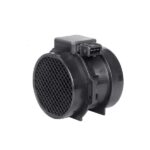As a car owner, you might be familiar with the OBD2 port, your vehicle’s gateway to vital diagnostic information. Mechanics use it, and so do many car enthusiasts for various monitoring and data logging purposes. But what happens when you need to plug in your OBD2 scanner or device and find that the port is already occupied? This situation, while seemingly a roadblock, is quite common, especially with the increasing popularity of OBD2-based aftermarket devices. This guide will explore practical solutions when you encounter the “OBD2 port already in use” dilemma, ensuring you can still access your car’s diagnostics without hassle.
Understanding Why Your OBD2 Port Might Be In Use
Before diving into solutions, it’s helpful to understand why your OBD2 port might be occupied in the first place. Modern vehicles are increasingly equipped with technology that utilizes this port for various functions beyond just diagnostics. Common culprits include:
- Insurance Telematics Devices: Many insurance companies offer discounts for safe driving, monitored through OBD2 devices that track driving habits.
- GPS Trackers: Vehicle tracking systems, often used for fleet management or anti-theft purposes, frequently plug into the OBD2 port for power and data.
- Performance Monitors and Gauges: Car enthusiasts often install devices that display real-time vehicle performance data, utilizing the OBD2 port as their data source.
- Remote Start or Security Systems: Some aftermarket remote start or security systems use the OBD2 port for integration with the vehicle’s electronics.
- Fuel Efficiency Monitors: Devices designed to help drivers optimize fuel consumption also commonly use the OBD2 port.
Knowing the reason behind the occupied port can sometimes influence the best course of action. However, in most cases, the solution will be to create a way to share the OBD2 port’s access.
Practical Solutions When Your OBD2 Port Is Occupied
Fortunately, having an occupied OBD2 port doesn’t mean you’re locked out of accessing your car’s diagnostic data. Several effective solutions are available:
1. Utilize an OBD2 Splitter Cable
The most straightforward solution is to use an OBD2 splitter cable, sometimes referred to as an OBD2 port doubler or Y-cable. This cable plugs into your vehicle’s OBD2 port and provides two or more female OBD2 ports. This allows you to connect multiple OBD2 devices simultaneously.
Pros of OBD2 Splitter Cables:
- Simultaneous Access: Allows you to use multiple OBD2 devices at the same time.
- Simple and Inexpensive: OBD2 splitters are readily available and relatively inexpensive.
- Easy Installation: Plug-and-play, requiring no technical expertise.
Cons of OBD2 Splitter Cables:
- Potential for Data Conflicts: In rare cases, simultaneous operation of multiple devices can lead to data conflicts or communication issues, especially if devices are trying to access the same data parameters at the same time.
- Power Draw: Multiple devices draw power from the OBD2 port, which could potentially strain the vehicle’s electrical system if devices have high power consumption, though this is rarely an issue with typical OBD2 devices.
- Bulkiness: Adding a splitter and multiple devices can create a cluttered area around the OBD2 port.
When to Use an OBD2 Splitter:
OBD2 splitters are ideal when you need to permanently install a device (like a tracker or insurance dongle) and still require occasional access for diagnostics or other OBD2 tools. For instance, you might have an insurance device installed but want to use your OBD2 scanner to check a “check engine” light.
2. Employ an OBD2 Extension Cable
An OBD2 extension cable doesn’t solve the problem of an occupied port, but it offers a different kind of convenience. If the device occupying your OBD2 port is cumbersome or located in an inconvenient spot, an extension cable can relocate the port to a more accessible location. Some extension cables also come with a splitter, combining the benefits of both solutions.
Pros of OBD2 Extension Cables:
- Port Relocation: Makes the OBD2 port more accessible, especially if it’s in an awkward location.
- Easier Access for Devices: Can provide more space and flexibility for connecting larger OBD2 devices.
- Some Combine Splitting Functionality: Certain extension cables include a splitter, offering dual functionality.
Cons of OBD2 Extension Cables:
- Doesn’t Solve Occupied Port Issue Alone: An extension cable by itself won’t help if you need to connect multiple devices.
- Added Cable Length: Extra cable length can sometimes introduce signal degradation, although this is rarely an issue with quality cables and standard OBD2 communication.
- Potential for Cable Damage: Exposed extension cables might be more prone to damage if not properly routed and secured.
When to Use an OBD2 Extension Cable:
Extension cables are useful when the OBD2 port location is inconvenient or when you need to make connecting and disconnecting devices easier. They are often used in conjunction with splitters or as a standalone solution if you only need to use one device at a time, but want easier physical access.
3. Consider Device Compatibility and Prioritization
Before resorting to splitters or extensions, check if the device currently occupying your OBD2 port is essential or if it can be temporarily disconnected when you need to use another OBD2 tool. Some devices, like insurance dongles, might have implications if disconnected, so consult your provider’s terms. For less critical devices, temporary disconnection might be the simplest solution.
Furthermore, investigate if the devices you intend to use are truly compatible with simultaneous operation. Some advanced OBD2 devices are designed to coexist with other systems on the vehicle’s network. Consulting the documentation for your specific devices can provide insights into potential compatibility issues.
4. Professional Diagnostic Services
If you are uncomfortable with DIY solutions or encounter persistent issues with OBD2 access, seeking professional diagnostic services is always a reliable option. Mechanics and diagnostic specialists have advanced tools and expertise to access vehicle data, even in complex scenarios. They may have specialized equipment that can bypass certain limitations or directly access vehicle systems without relying solely on the standard OBD2 port.
Pros of Professional Services:
- Expertise and Advanced Tools: Professionals have in-depth knowledge and sophisticated equipment for comprehensive diagnostics.
- Reliable Solutions: Professional services are less likely to encounter compatibility or technical issues.
- Comprehensive Diagnosis: Mechanics can perform a wider range of diagnostic tests beyond basic OBD2 scanning.
Cons of Professional Services:
- Cost: Professional services are generally more expensive than DIY solutions.
- Time: Requires scheduling an appointment and taking your vehicle to a service center.
When to Use Professional Services:
Professional services are best when you need complex diagnostics, are unsure about DIY solutions, or suspect deeper vehicle issues beyond what a standard OBD2 scanner can reveal. They are also valuable if you encounter problems after using splitters or extensions and need expert troubleshooting.
Key Considerations When Choosing a Solution
When deciding what to do if your OBD2 port is already in use, keep these factors in mind:
- Power Requirements: Ensure that adding splitters and multiple devices doesn’t overload the OBD2 port’s power supply. Check the power consumption of your devices, although this is rarely a problem with typical OBD2 tools.
- Data Interference: Be aware of the potential for data conflicts when using splitters, especially with devices that aggressively poll the vehicle’s network. Choose reputable splitter brands and monitor for any communication issues.
- Device Compatibility: Confirm that all devices you intend to use are compatible with OBD2 standards and with each other if using a splitter.
- Security: Be cautious about low-quality or uncertified OBD2 splitters and extension cables, as poorly made connectors could potentially damage your vehicle’s electrical system or create security vulnerabilities. Stick to reputable brands and suppliers.
- Legality and Terms of Service: If the device occupying your OBD2 port is provided by an insurance company or another service, understand the implications of using splitters or disconnecting the device. Review your terms of service to avoid any violations.
Conclusion
Finding your OBD2 port already in use doesn’t have to be a diagnostic dead end. OBD2 splitter cables offer a convenient and cost-effective way to share the port’s access and use multiple devices simultaneously. OBD2 extension cables provide port relocation and easier device connectivity. For complex situations or when DIY solutions are insufficient, professional diagnostic services are readily available. By understanding your options and considering the key factors, you can confidently address the “OBD2 port already in use” scenario and maintain access to your vehicle’s valuable diagnostic information.
To further enhance your understanding of OBD2 systems and car diagnostics, explore our comprehensive guides on OBD2 data logging and CAN bus technology.

